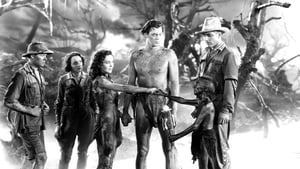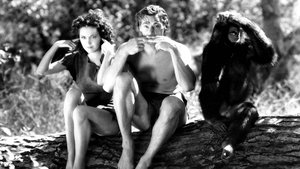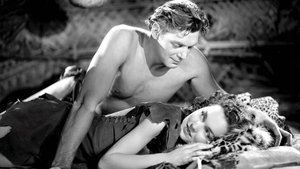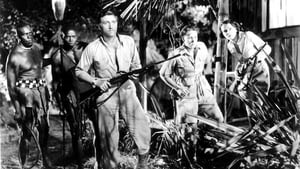Video Sources 0 Views
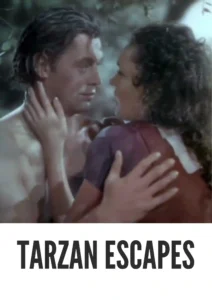
Synopsis
Roar into Adventure: Tarzan Escapes (1936) in Vivid Color

Leap into the wild with Tarzan Escapes, a thrilling 1936 adventure, now colorized to bring the jungle to life like never before. Starring the iconic Johnny Weissmuller as Tarzan and Maureen O’Sullivan as Jane, this film delivers a captivating blend of action, suspense, and romance. Perfect for fans of classic adventure and those seeking a nostalgic trip to the heart of the jungle, this HD download offers a visually stunning experience. Tarzan Escapes is also known under the title Tarzan and the Elephant Boy.
Tarzan Escapes Storyline: Trapped Between Worlds
Tarzan Escapes plunges our hero into a precarious situation when a group of explorers attempts to bring him back to civilization for exhibition. Jane (Maureen O’Sullivan), torn between her love for Tarzan and the prospect of returning to her old life, finds herself at the center of the conflict.As the explorers try to capture Tarzan, the jungle lord uses all his cunning and strength to evade them, enlisting the aid of his animal friends. A thrilling game of cat and mouse ensues, with Tarzan protecting his freedom and Jane caught in the middle. The film showcases thrilling jungle action, daring escapes, and the enduring bond between Tarzan and Jane. Ultimately, Tarzan Escapes is an exciting adventure that explores the clash between civilization and the wild.
Movie Cast
The film boasts a talented cast, bringing the jungle adventure to life:
- Johnny Weissmuller as Tarzan
- Maureen O’Sullivan as Jane
- John Buckler as Captain Fry
- Herbert Mundin as Rawlins
- William Henry as Eric
Movie Genre
Tarzan Escapes swings into the genre of adventure, with elements of action, romance, and suspense. It’s a classic jungle adventure, complete with thrilling stunts and exotic settings.
Historical Context: The Golden Age of Tarzan
Released in 1936, Tarzan Escapes is part of the golden age of Tarzan films, solidifying Johnny Weissmuller’s place as the definitive Tarzan. These films captured the imagination of audiences worldwide, offering an escape to exotic locales and thrilling adventures. Tarzan Escapes exemplifies the blend of action, romance, and exoticism that made the Tarzan series a cinematic phenomenon.
Colorization Details
This colorized version of Tarzan Escapes has been carefully restored using modern digital techniques, enhancing the visual appeal while preserving the film’s original sense of adventure. The colorization process involved detailed analysis of the original black and white footage, adding vibrant colors to the jungle landscapes and characters. This meticulous process brings a fresh perspective to the film, making it more engaging for contemporary audiences. While the debate around colorizing classic films continues, it undeniably introduces these films to new viewers, ensuring their continued appreciation for generations to come.
Technical Details
- Director: Richard Thorpe
- Screenplay: Cyril Hume
- Based on: Characters created by Edgar Rice Burroughs
- Cinematography: Leonard Smith
- Edited by: Gene Fowler Jr.
- Production Company: Metro-Goldwyn-Mayer
- Distributed by: Loew’s Inc.
- Runtime: 95 minutes
Technical Specifications
- Download Format: MP4
- Resolution: HD (1080p)
- Compatibility: Compatible with most devices, including smartphones, tablets, computers, and smart TVs.
Reviews and Critical Reception
Tarzan Escapes (1936) is celebrated for its thrilling action sequences, exotic jungle setting, and the charismatic performances of Johnny Weissmuller and Maureen O’Sullivan. As a classic entry in the Tarzan series, it continues to entertain audiences with its timeless adventure and enduring appeal. It remains a beloved example of classic Hollywood escapism.
FAQs
- Q: What is Tarzan Escapes about?
- A: Tarzan Escapes follows Tarzan as he evades explorers attempting to bring him back to civilization.
- Q: Is Tarzan Escapes (1936) considered a classic Tarzan film?
- A: Yes, it is a beloved entry in the Tarzan series, starring Johnny Weissmuller and Maureen O’Sullivan.
- Q: Is this version of Tarzan Escapes colorized?
- A: Yes, this version has been professionally colorized to enhance the viewing experience.
- Q: What makes Tarzan Escapes appealing to fans of classic adventure?
- A: Tarzan Escapes offers thrilling jungle action, exotic settings, and the iconic portrayal of Tarzan by Johnny Weissmuller.
- Q: What is the download format?
- A: The download format is MP4, which is compatible with most devices.
- Q: What resolution is the download?
- A: The resolution is HD (1080p), providing a high-quality viewing experience.
Download Now in HD!
Watch Tarzan Escapes Today!
